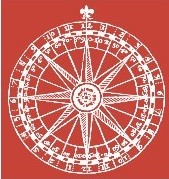Speech Versus Spectacle: Autolycus, Class and Containment in The Winter's Tale
Shakespeare's Winter's Tale is a play in which theatrical spectacle triumphs over speech, as stage action obscures the incoherence of verbal representation. This paper identifies Autolycus as a composite of Jacobean anxieties about the sources of…
Listado en Article | publicación de grupo Iter Community
Versión 1.0 - publicado en 08 Jul 2025
Licencia Creative Commons BY-NC 4.0
Descripción
Shakespeare’s Winter’s Tale is a play in which theatrical spectacle triumphs over speech, as stage action obscures the incoherence of verbal representation. This paper identifies Autolycus as a composite of Jacobean anxieties about the sources of social instability, and explores his place in this dramatic process. The spectacular techniques of containment that reconcile all the other characters do not quite work on the sturdy rogue. He embodies the failure of Jacobean England’s historical attempt, and the play’s dramatic attempt, to assimilate those it has defined as unassimilable.
Cita este trabajo
Los investigadores deben citar este trabajo de la siguiente manera:
Etiquetas
Notas
Original publication: Cooley, Ronald W. "Speech Versus Spectacle: Autolycus, Class and Containment in The Winter's Tale." Renaissance and Reformation 33 (3): 2010. 5-23. DOI: 10.33137/rr.v33i3.11356. This material has been re-published in an unmodified form on the Canadian HSS Commons with the permission of Iter Canada / Renaissance and Reformation. Copyright © the author(s). Their work is distributed by Renaissance and Reformation under a Creative Commons Attribution-NonCommercial 4.0 International License. For details, see https://creativecommons.org/licenses/.
Vista previa de la publicación
Iter Community
This publication belongs to the Iter Community group.
When watching a publication, you will be notified when a new version is released.
